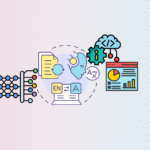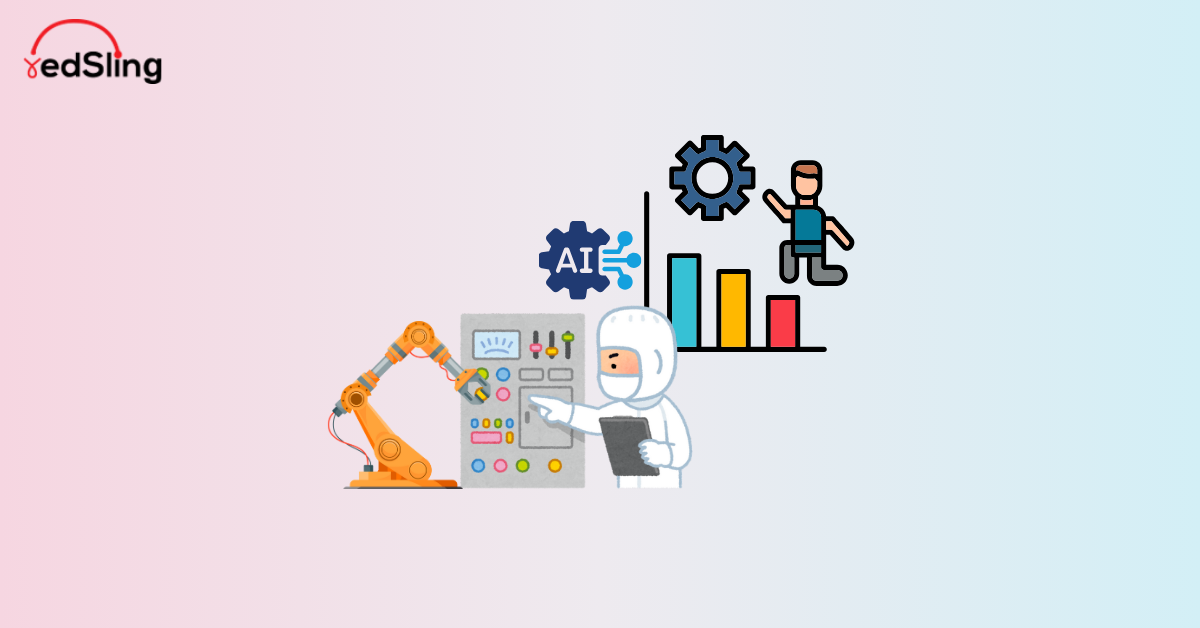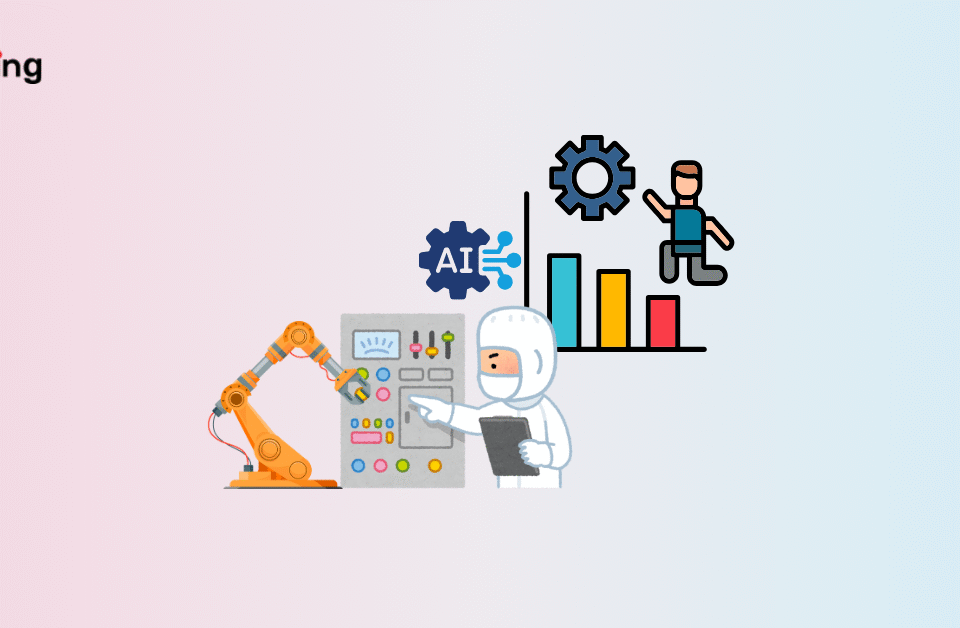Connecting Information Technology (IT) systems with Operational Technology (OT) devices has long been a stumbling block for industrial organisations. While IT focuses on enterprise systems, data analytics, and business processes, OT governs the physical machinery such as sensors, controllers, pumps, and production lines that keep factories running. Traditionally, these worlds have operated in isolation, often resulting in inefficiencies, delays, and missed opportunities for optimisation.
As industries pursue digital transformation and demand real-time responsiveness, bridging IT and OT has become mission-critical. Yet, the path is riddled with obstacles that many solutions fail to overcome.
In most industrial environments, data from machines, chillers, pumps, robotic arms, conveyors, and IoT sensors is siloed across different systems or trapped in proprietary formats in isolated settings with no internet access or on industrial 5G networks. This slows down decision-making, increases the risk of downtime, and leaves factories reactive rather than proactive. On the other side, enterprise IT systems thrive on connectivity, scalability, and integration. Bridging the two worlds, without compromising performance, security, or reliability is a challenge that has frustrated industries for decades. This is where redSling is rewriting the rulebook with its platformless, no-code architecture, enabling IT and OT to work together in perfect sync.
The Barriers to IT-OT Integration
The difficulty of unifying IT and OT stems not just from technical incompatibilities, but also from cultural and operational divides. OT environments are often on-premise, secure, and air-gapped, while IT environments thrive in cloud-based, collaborative ecosystems.
Traditional approaches to IT-OT integration often fail because they were never designed for the realities of industrial environments. Backend systems struggle to communicate seamlessly with frontend monitoring dashboards. IoT devices rely on proprietary protocols or file-based outputs that resist standardisation. Operations teams require low-latency, reliable communication, a demand that cloud-only solutions often fail to meet.
Scaling across multiple factories adds even more complexity, as every site may have its own systems, devices, and compliance requirements. The result is:
- Backend and frontend systems that remain disconnected.
- IoT devices locked in silos, unable to share data seamlessly.
- Latency issues that undermine real-time operations.
- Costly inefficiencies when scaling across sites.
For businesses, the impact is clear, higher costs, reduced agility, and limited visibility into mission-critical operations. To overcome these challenges, organisations need a solution that is not just another integration layer, but a new way of connecting IT and OT.
redSling’s Platformless Advantage in Eliminating Barriers Between IT and OT
redSling is the world’s first platformless No-Code application platform, uniquely designed to overcome the barriers of IT-OT integration. Unlike traditional solutions that depend on heavy runtimes, proprietary frameworks, or cloud-only architectures, redSling applications are deployed as lightweight Docker containers which are portable, secure, and independent of platform runtime.
This means businesses can run redSling-powered applications on-premises without depending on external connectivity or on any cloud infrastructure. For industries where reliability and control are paramount such as manufacturing, energy, logistics, and more, this flexibility is game-changing.
Key advantages include:
-
- On-Premise Deployment: Operates in factory settings with no internet connectivity required and on factory only industrial networks.
- Low-Latency Two-Way Communication: WebSocket tunnels connect backend, frontend, and IoT devices for instant data exchange.
- Seamless Device Integration: Supports file-based inputs, industrial controllers, and enterprise systems without complex middleware and including integration with AI models.
- Scalability Without Compromise: Container-based deployment ensures secure scaling across multiple factories or sites.
- Rapid Adaptation: Update workflows, logic, or device integrations instantly.
By removing unnecessary layers and dependencies, redSling allows IT and OT teams to collaborate in ways that were previously difficult, if not impossible.
Real-Time Operations Made Possible
At the heart of redSling’s advantage is Logic Builder (LB), a powerful No-Code environment that brings programmability into the hands of operations teams. With LB, organisations can define workflows and automation rules that respond instantly to live IoT data including controlling machines, triggering alerts, or optimising performance in real time.
This capability means that businesses are no longer reactive, waiting for delayed insights or manual interventions. Instead, they can:
-
- Monitor IoT devices in real time.
- Automate workflows based on live sensor conditions.
- Enable predictive maintenance that prevents downtime.
- Integrate OT signals directly into IT dashboards for unified visibility.
The result is a shift from siloed, manual operations to intelligent, connected, and future-proof operations.
Case Study: Jetron’s Smart Industrial AI Driven Cooling Solution
A powerful example of redSling in action is its collaboration with Ningbo Jetron, a leader in industrial automation and digital transformation in China. Jetron serves over 10,000 customers globally and has developed modular, intelligent platforms across industries from automotive to petrochemicals.
Cooling systems in large factories represent one of the most complex and energy-intensive challenges in industrial operations. Multiple chillers, pumps, and air-handling units must work in synchrony to maintain optimal conditions. Traditional solutions often fail due to:
-
- Complex coordination between machines.
- Energy waste from manual adjustments.
- Siloed data locked inside proprietary systems.
- Delayed insights leading to downtime risks.
- Difficulty scaling across multiple factory sites.
Jetron’s Smart Industrial AI Driven Cooling Solution, built on redSling, transforms this landscape. redSling effortlessly converts and exchanges data between MySQL, CSV, and AI models, enabling seamless bi-directional data flows that optimise cooling performance. The solution integrates IoT devices, AI models, and operational workflows into a single intelligent platform.
The result is real-time monitoring, automated optimisation, and predictive insights that make industrial cooling systems more efficient, reliable, and cost-effective. Operators
access live dashboards, alarms, and analytics through a simple browser interface, while redSling’s platformless architecture ensures scalability and security.
By combining Jetron’s industrial expertise with redSling’s IT-OT connectivity capability, large factories now have a smarter, more resilient solution for one of their most critical operational needs.
Key Benefits for Organisations
By bridging IT and OT with redSling, businesses can monitor and control IoT devices in real time, while automating workflows that power predictive maintenance and reduce downtime. Instead of data being trapped in silos, operational signals are brought into enterprise dashboards, creating a single, unified view across both shop-floor activity and business systems.
At the core of this capability is redSling’s platformless architecture, designed for seamless connectivity between devices, AI models, and enterprise applications. With bi-directional communication tunnels, insights and control instructions move instantly between backend logic, front-end dashboards, and physical equipment. This allows operators to visualise live performance while enabling AI-driven workflows to take immediate corrective action without manual input.
The result is a system that not only streamlines operations but also adapts securely to diverse deployment models — whether fully on-premise, in hybrid environments, or within industrial 5G networks. Factories gain the agility to scale across sites, the intelligence to anticipate and resolve issues before they escalate, and the resilience to remain competitive in an increasingly digital, AI-powered industrial landscape.
Conclusion: The Future of IT-OT Connectivity
The gap between IT and OT has long been a roadblock to industrial innovation. Traditional approaches have either been too rigid, too slow, or too dependent on external systems to truly meet the demands of real-time operations.
redSling changes the equation. With its platformless, No-Code architecture, it eliminates integration barriers, empowers real-time decision-making, and ensures secure, scalable deployments across industries. The Jetron case study proves what’s possible: by bridging IT and OT seamlessly, factories can cut energy costs, increase uptime, and achieve smarter operations today right now.
For organisations looking to future-proof their operations, redSling offers more than a platform. It offers a new way forward, one where IT and OT are no longer separateworlds, but part of a single real-time intelligent system driving efficiency, innovation, and resilience.








